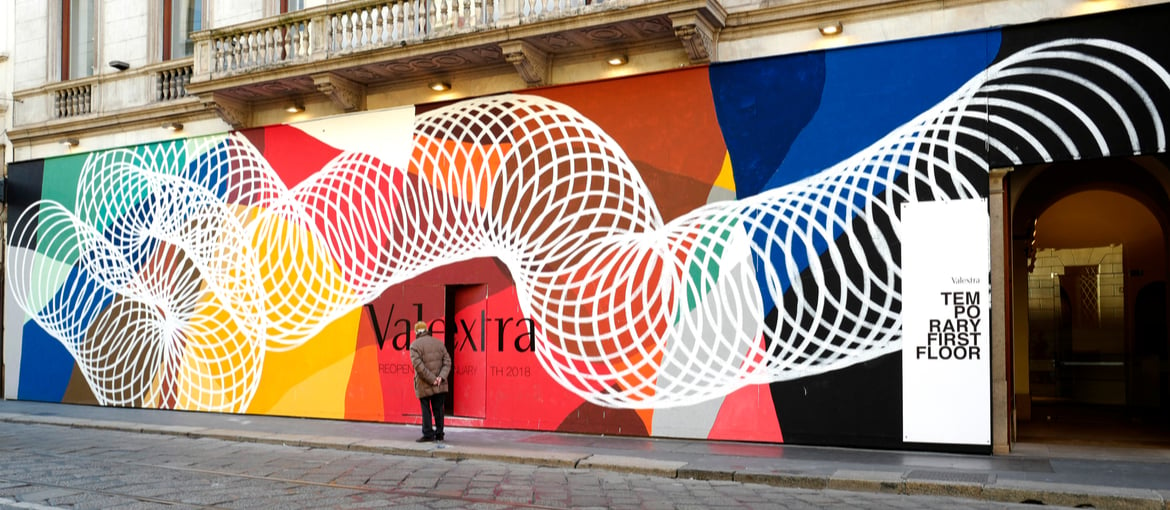Table of Contents
Pop-up shops: the best examples to inspire you
In the article How to set up a pop-up shop we went through some useful tricks and techniques for setting up a pop-up shop, and investigated how to enhance the products on display by making best use of the available space. So now we thought we would look at some excellent examples of pop-up stores that you can use as inspiration for your own business activities.
Game of Thrones – Toronto
The pop-up shop opened by HBO in Toronto to mark the launch of the fifth series of the TV series Game of Thrones is a triumph of merchandising in all its forms, replete with figurines, sunglasses, hats, t-shirts, fabric badges and mini-replicas of the Iron Throne. At the entrance of the shop there is even a 4D puzzle map of Westeros (the fictitious land where the series is set), complete with small fortresses and flags marking the most important locations and events. The store also houses a rare life-size reproduction of the Iron Throne, designed to offer fans the chance to grab a unique photo.

Nike SNEAKRS – Atlanta
The Nike SNKRS app allows fans of the brand to stay up to date on the latest news and to read stories about the renowned sportswear brand’s most iconic models. In February 2019, Nike launched a pop-up shop in Atlanta dedicated to the app’s users – using geofencing technology, the company sent a push notification to everyone located within a twenty-five-mile radius of the centre of Atlanta, offering them the chance to buy limited-edition footwear. As well as various pieces of merchandise, the shop contained a free accessory vending machine inspired by Atlanta and the world of SNKRS, which could be activated using a QR code created within the app.

This is an interesting example of a “physical manifestation of the SNKRS app”, as the company put it, which may provide inspiration for anyone who has developed mobile apps linked to the sale of goods or services.
Alexander McQueen –London
Alexander McQueen’s pop-up store was launched in October 2019 in Harrods in London, with a layout and clothes inspired by nature. Inside, fans of the British fashion label could find handmade clothes and limited-edition accessories. An augmented reality app created for the occasion was the icing on the cake, making butterflies and other animals ‘appear’ among the wonderful items on display.

The Instagram Edit –London
Staying in London, an interesting experiment from Instagram provided the first example of a bricks-and-mortar shop dedicated to eight digitally native brands that owe their success to the renowned social network. The pop-up shop, which was open from 5 to 15 December 2019 in the Selfridges department store, housed a selection of clothes, accessories, beauty products and homeware items produced by the eight chosen brands.

This is another example of how the online and offline markets are not two separate worlds, but rather a single large community that can take advantage of the potential of both platforms to increase sales opportunities.
The Dodo – New York
In October 2019, the media brand The Dodo, which specialises in creating and promoting stories on animals and animal rights, created a space entitled The Best Dog Day Ever in New York, which was open to the public for a fortnight. The company set up a 17,000 m² Halloween-themed area dedicated entirely to entertaining dogs and their owners, with games, masked parades, and even a bar giving out dog-friendly ice cream!

The empty boutique – Amsterdam
A 50 m² shop in the museum district of Amsterdam, completely empty and open to the public for just one week. This unusual brainwave came from the actor and theatre director Thomas Spijkerman: each visitor could buy ‘bottles of emptiness’ and work out, with the artist, how they would use it in their everyday lives.
Each purchase became an opportunity for discussion with the director, during which customers recounted their life stories and attributed a personal meaning to the spaces and the concept of the store. For many people, “emptiness became a symbol of positivity, awareness, and being connected to yourself”, Spijkerman noted.

This operation, which combined the commercial and the philosophical, revealed how pop-up shops can also be used creatively for innovative, against-the-grain art projects.
As these examples demonstrate, pop-up shops are extremely versatile and flexible marketing tools, which can pique the curiosity of the public and help to promote certain products or initiatives. The Instagram and Nike shops show how pop-up stores can also help to increase user engagement for mobile apps, by extending interaction with the brand to a physical space designed to offer an exclusive experience.

